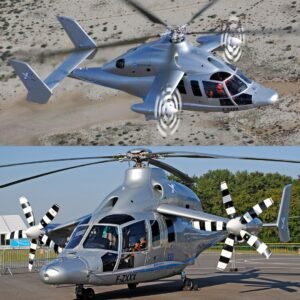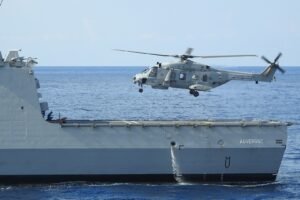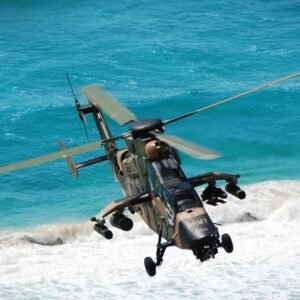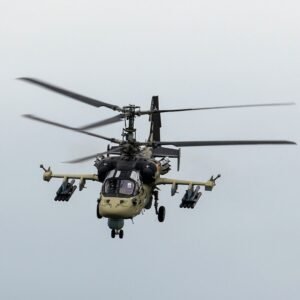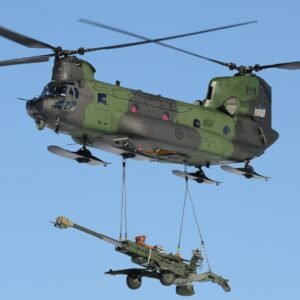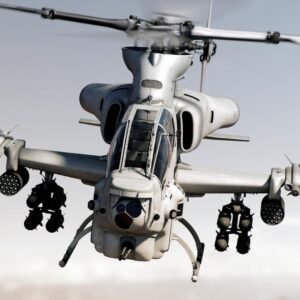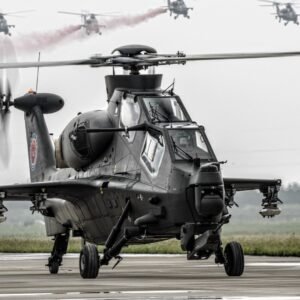I. Introduction
The HAL Dhruv helicopter was developed by Hindustan Aeronautics Limited (HAL), a leading aerospace company in India. The development of the Dhruv helicopter began in the 1980s, with the aim of creating an indigenous helicopter that would meet the requirements of the Indian Armed Forces. The project was undertaken by HAL’s Rotary Wing Research and Design Center in Bangalore.

HAL collaborated with several international companies to develop the Dhruv helicopter. For instance, the helicopter’s engines were initially sourced from the French company, Turbomeca, but later were replaced with engines developed by HAL itself. Other international companies involved in the project included Eurocopter, Messerschmitt-Bölkow-Blohm (MBB), and the German Aerospace Center (DLR).
The first prototype of the Dhruv helicopter made its maiden flight in 1992. After several rounds of testing and improvements, the helicopter was certified for production in 1998. Since then, the Dhruv helicopter has been in continuous production, with HAL delivering hundreds of units to various customers both in India and abroad.
The development of the Dhruv helicopter marked a significant milestone for India’s aerospace industry, as it demonstrated the country’s capability to develop advanced aerospace technologies indigenously. Today, the Dhruv helicopter is considered to be one of the most successful aerospace projects in India’s history.

II. Development History of The HAL Dhruv Helicopter
- Conceptualization and Design (the 1980s-1990s): The idea for the Dhruv helicopter was conceived in the 1980s when the Indian Armed Forces expressed a need for a modern and indigenous helicopter. HAL’s Rotary Wing Research and Design Center in Bangalore was tasked with developing the helicopter, and work began in the early 1990s. The initial design was based on the Eurocopter AS 365 Dauphin helicopter, with several modifications to suit Indian requirements.
- Prototyping and Testing (the 1990s-2000s): The first prototype of the Dhruv helicopter, known as the Technology Demonstrator (TD-1), made its maiden flight on August 20, 1992. Over the next few years, several more prototypes were built and tested, with each iteration incorporating design improvements and new technologies. In 1998, the Dhruv helicopter received certification for production from the Indian government’s aviation regulator, the Directorate General of Civil Aviation (DGCA).
- Production and Delivery (2000s-Present): Since the certification for production, HAL has been producing the Dhruv helicopter at its facilities in Bangalore and Tumkur. The helicopter has been in service with the Indian Armed Forces since 2002, and several variants of the helicopter have been developed for specific roles such as transport, utility, reconnaissance, and combat. The Dhruv helicopter has also been exported to several countries, including Nepal, Ecuador, and Peru.
- Upgrades and Improvements (2000s-Present): HAL has continuously worked on improving and upgrading the Dhruv helicopter over the years. In 2012, a major upgrade program was initiated to improve the helicopter’s performance, safety, and reliability. The upgrades included the installation of new engines, avionics, and mission systems. In 2020, HAL announced the development of a new variant of the Dhruv helicopter, the Mk-IV, which is expected to have a larger payload capacity and enhanced avionics.

III. Design of HAL Dhruv Helicopter
- Airframe: The Dhruv helicopter has a conventional airframe design with a five-blade main rotor and a tail rotor. The airframe is made of a combination of aluminum alloys and composite materials, which makes it lightweight and durable.
- Avionics: The Dhruv helicopter is equipped with advanced avionics systems, including a digital autopilot, GPS navigation, and weather radar. The cockpit features multifunction displays (MFDs) that provide pilots with real-time information on the helicopter’s systems and performance.
- Powerplant: The Dhruv helicopter is powered by two Shakti turboshaft engines, which are developed jointly by HAL and French aerospace company Turbomeca. The engines provide a maximum power output of 1,250 horsepower each and are designed to operate in hot and high-altitude conditions.
- Cabin: The Dhruv helicopter has a spacious cabin that can accommodate up to 12 passengers or cargo. The cabin features large windows that provide excellent visibility and a comfortable environment for passengers.
- Cockpit: The Dhruv helicopter’s cockpit features a modern and ergonomic design, with advanced displays and controls that enable pilots to operate the helicopter safely and efficiently. The cockpit is also equipped with advanced mission systems, including a forward-looking infrared (FLIR) camera and a targeting system.
- Performance: The Dhruv helicopter has excellent performance capabilities, with a maximum cruise speed of 280 km/h (174 mph) and a maximum range of 800 km (497 miles). The helicopter can also operate at high altitudes and in hot and humid conditions, making it suitable for a wide range of applications.
- Variants: The Dhruv helicopter has several variants that are designed for specific roles, including transport, utility, reconnaissance, and combat. Each variant features specific modifications to suit its intended role.

IV. Testing and Upgrade History
The HAL Dhruv helicopter has undergone extensive testing and several upgrade programs over the years. Here is a brief overview of the testing and upgrade history of the Dhruv helicopter:
A. Testing History:
The Dhruv helicopter underwent extensive flight testing during its development phase, with several prototypes being built and tested to improve the helicopter’s performance, handling, and reliability.
- In 1998, the Dhruv helicopter received certification for production from the Indian government’s aviation regulator, the Directorate General of Civil Aviation (DGCA). However, HAL continued to test and improve the helicopter even after production began.
- In 2002, the Dhruv helicopter was inducted into service with the Indian Armed Forces after successfully completing a series of user trials and acceptance tests.
- In 2003, the Dhruv helicopter successfully completed high-altitude flight trials in the Himalayas, demonstrating its ability to operate in challenging environments.
- In 2006, the Dhruv helicopter successfully completed cold weather trials in Russia, further demonstrating its capabilities in extreme weather conditions.
B. Upgrade History:
- In 2009, HAL initiated a major upgrade program for the Dhruv helicopter, known as the ‘Shakti’ program. The upgrade included the installation of new engines and avionics and improvements to the helicopter’s structural and aerodynamic design. The upgraded helicopter was designated as the Dhruv Mk-III.
- In 2012, HAL initiated another upgrade program for the Dhruv helicopter, known as the ‘Integrated Dhruv Upgrade Program’. The upgrade included improvements to the helicopter’s mission systems, cockpit displays, and communications equipment. The upgraded helicopter was designated as the Dhruv Mk-III MR.
- In 2015, HAL signed a contract with French aerospace company Safran to develop and manufacture a new engine for the Dhruv helicopter. The new engine, called the Ardiden 1U, was installed in the upgraded Dhruv helicopter, designated as the Dhruv Mk-IV.
- In 2020, HAL announced the development of a new variant of the Dhruv helicopter, the Mk-IV Rudra, which will have an improved payload capacity and enhanced avionics.

V. Operational History
The HAL Dhruv helicopter has been in operation with the Indian armed forces since 2002 and has been used in a range of military operations and exercises. Here are some examples of the Dhruv helicopter’s operational and war history:
- Operation Pawan (Sri Lanka, 1987-1990): The Dhruv helicopter was used by the Indian Peace Keeping Force (IPKF) during the Sri Lankan Civil War to transport troops, supplies, and wounded soldiers. Dhruv’s performance in high-altitude and hot weather conditions was particularly beneficial in the mountainous terrain of northern Sri Lanka.
- Kargil War (India-Pakistan, 1999): The Dhruv helicopter was used extensively during the Kargil War to support troop movements, resupply operations, and medical evacuation missions. The Dhruv’s ability to operate at high altitudes and in harsh weather conditions was crucial in supporting Indian ground forces in the rugged terrain of the Himalayas.
- Operation Meghdoot (Siachen Glacier, 1984-present): The Dhruv helicopter has been used by the Indian Army to support operations in the Siachen Glacier, the highest battlefield in the world. Dhruv’s performance in high-altitude and extreme weather conditions has made it a critical asset in supporting troops and supplies in this challenging environment.
- Humanitarian Operations: The Dhruv helicopter has been used in a range of humanitarian operations, including disaster relief and search and rescue missions. For example, Dhruv was used to supporting relief efforts after the 2004 Indian Ocean tsunami, the 2013 Uttarakhand floods, and the 2015 earthquake in Nepal.
- International Deployments: The Dhruv helicopter has been exported to several countries, including Ecuador, Mauritius, and Nepal, and has been used in a range of operations in these countries. For example, the Dhruv has been used by the Nepalese Army to support relief efforts after earthquakes and landslides, and by the Ecuadorian Air Force for transport and reconnaissance missions.
VI. Advantages and Limitations.
A. Advantages:
- Versatile Mission Capabilities: The HAL Dhruv helicopter has a versatile mission capability, making it suitable for a wide range of military and civilian applications. It can be used for transport, search and rescue, disaster relief, medical evacuation, and other missions.
- High Altitude and Hot Weather Operations: The Dhruv helicopter has demonstrated its ability to operate in high-altitude and hot weather conditions, making it suitable for operations in mountainous and desert regions.
- Advanced Technology: The Dhruv helicopter is equipped with advanced technology, including a digital cockpit, autopilot, and advanced avionics. These features enhance the helicopter’s performance, safety, and mission capabilities.
- Cost-Effective: The Dhruv helicopter is a cost-effective platform compared to many of its international counterparts, making it an attractive option for many countries with limited defense budgets.
- Local Manufacturing: The Dhruv helicopter is manufactured in India, which helps to support the local economy and reduce dependence on foreign suppliers.
B. Limitations:
- Safety Concerns: The Dhruv helicopter has faced several safety concerns over the years, including accidents and incidents related to its engine and rotor systems. However, HAL has worked to address these issues through design modifications, maintenance improvements, and training enhancements.
- Limited Payload Capacity: The Dhruv helicopter has a limited payload capacity compared to some of its international counterparts, which can limit its mission capabilities.
- Maintenance Requirements: The Dhruv helicopter requires regular maintenance to ensure its continued airworthiness and safe operation. This can be a significant logistical challenge for operators, particularly in remote or austere environments.
- Limited Range: The Dhruv helicopter has a limited range compared to some of its international counterparts, which can limit its operational flexibility and effectiveness in certain mission scenarios.
- Competition from International Suppliers: The Dhruv helicopter faces stiff competition from international suppliers of helicopters, which may offer more advanced features and capabilities, and have established supply chains and support networks in many countries.

VII. HAL Dhruv Helicopter- Variants
The HAL Dhruv helicopter has several variants, each designed for specific purposes. Here are some of the main variants of the Dhruv helicopter:
- Dhruv Mk-I: This is the basic version of the Dhruv helicopter, designed for utility and transport purposes. It can carry up to 14 passengers and has a maximum take-off weight of 5,500 kg.
- Dhruv Mk-III: This variant of the Dhruv helicopter is designed for high-altitude operations, particularly in the Himalayan region. It has an increased take-off weight of 5,800 kg and improved performance at high altitudes.
- Dhruv Mk-IV: This variant of the Dhruv helicopter is designed for naval operations, particularly for search and rescue, anti-submarine warfare, and maritime reconnaissance. It has a strengthened airframe and avionics systems for naval operations.
- Dhruv Mk-V: This variant of the Dhruv helicopter is designed for armed reconnaissance and surveillance. It has a range of advanced sensors, including electro-optical and infrared cameras, and can carry weapons such as rockets and missiles.
- Dhruv Mk-VI: This variant of the Dhruv helicopter is designed for medical evacuation and air ambulance services. It has a dedicated medical cabin and can transport up to two stretchers and medical equipment.
- Dhruv Mk-VII: This variant of the Dhruv helicopter is designed for VIP transport and can carry up to eight passengers. It has a luxurious cabin with advanced entertainment systems and other amenities.
- Rudra: This is an armed version of the Dhruv helicopter, equipped with a range of weapons including rockets, missiles, and guns. It is designed for close air support, armed reconnaissance, and anti-tank operations.
A. General Specification
| Specification | Mk-I | Mk-III | Mk-IV | Mk-V | Mk-VI | Mk-VII | Rudra |
| Crew | 1-2 | 1-2 | 2 | 2 | 2 | 2 | 2 |
| Passengers | 12-14 | 10-12 | 10 | N/A | 2 | 6-8 | N/A |
| Length (meter) | 15.87 | 15.87 | 16.2 | 15.87 | 15.87 | 15.87 | 15.87 |
| Rotor diameter (meter) | 13.2 | 13.2 | 13.2 | 13.2 m | 13.2 | 13.2 | 13.2 |
| Height (meter) | 4.98 | 4.98 | 4.98 | 4.98 | 4.98 | 4.98 | 4.98 |
| Maximum takeoff weight (kg) | 5,500 | 5,800 | 5,800 | 5,500 | 5,500 | 5,500 | 5,500 |
| Maximum speed (km/h) | 290 | 320 | 280 | 280 | 280 | 280 | 290 |
| Range (km) | 600 | 800 | 700 | 700 | 700 | 700 | 450 |
| Endurance (hours) | 3.5 | 4 | 4 | 4 | 4 | 4 | 2 |
| Engine | 2 x Shakti | 2 x Shakti | 2 x Shakti | 2 x Shakti | 2 x Shakti | 2 x Shakti | 2 x Shakti |
| Armaments | None | None | 2 x torpedoes or 4 x anti-ship missiles | 4 x rocket pods or 2 x anti-tank guided missiles | None | None | 20 mm turret gun, 4 x air-to-ground missiles, 4 x air-to-air missiles |
| Avionics | Weather radar, navigation systems, GPS, avionics suite | Weather radar, navigation systems, GPS, avionics suite | Weather radar, navigation systems, GPS, avionics suite, search radar, sonar, electronic warfare suite | Electro-optical and infrared cameras, laser designator, forward-looking infrared (FLIR) cameras, helmet-mounted display system (HMDS), missile approach warning system (MAWS) | Medical equipment, hoist system, medical cabin | Luxury cabin with entertainment systems, navigation systems, GPS, and avionics suite | Electro-optical and infrared cameras, laser designator, forward-looking infrared (FLIR) camera, helmet-mounted display |
VIII. Global Operators of HAL Dhruv Helicopter
- India: Indian Army, Indian Navy, Indian Air Force
- Ecuador: Ecuadorian Army
- Maldives: Maldives National Defence Force
- Nepal: Nepalese Army
- Peru: Peruvian Army
- Suriname: Surinamese Air Force
- Turkey: Turkish Army
Read More:- Eurocopter Tiger Attack Helicopter and Eurocopter NH90 NFH.




